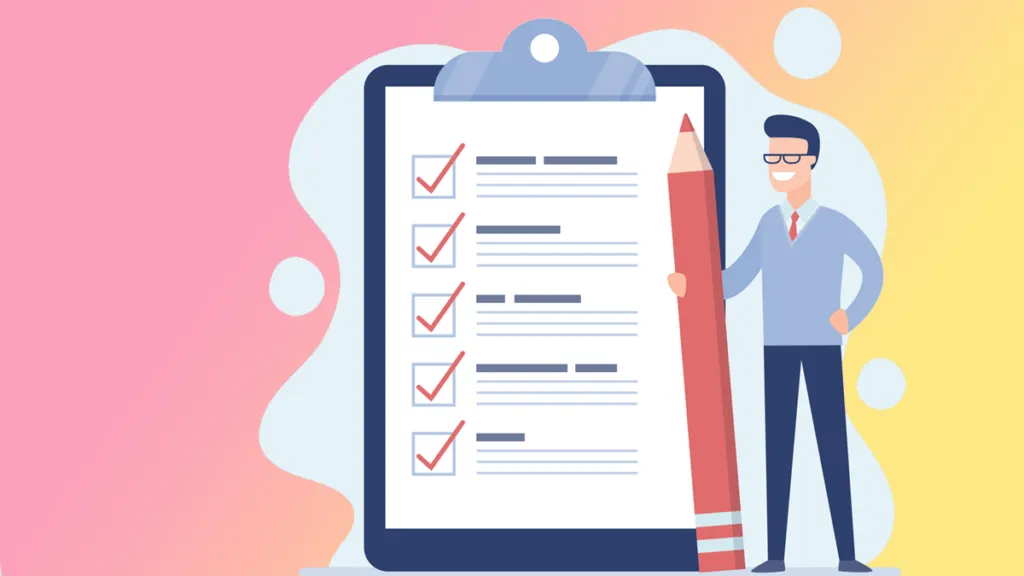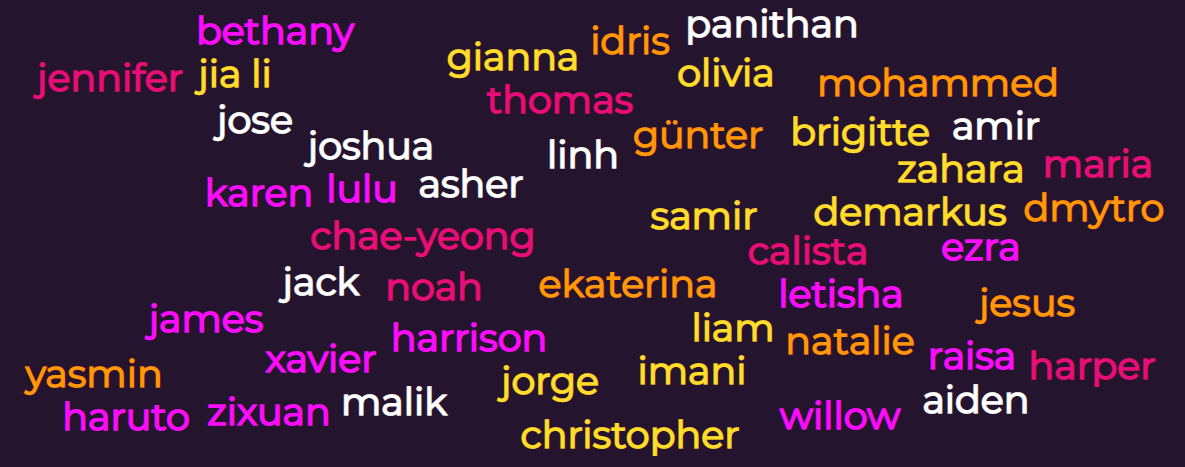5 Things To Put On Your Resume, No Matter the Job
Almost all professional jobs require a resume to get your foot in the door, making a resume one of the most important documents you will need at each step of your career.
What is a resume, anyway… and what do you need to put on it?
What is a Resume?
A resume is a document used by employers to help them understand whether you have the knowledge, skills, and experience matching their job opening. Having a strong resume that clearly shows how you meet their desired job qualifications is essential for getting an interview, the next step of the hiring process.
Taking the time to learn how to write a resume that will stand out from the crowd is more important than ever during economic downturns when more applicants are competing for fewer openings.
What to Put on a Resume
Although resumes will vary by industry, experience, and other factors, here is an overview of the key sections and information every resume should include.
1. Contact Information
Provide your name and contact information at the top of the resume but not in the document header. Contact information should include an email address and phone number. Use an email address that is professional such as jaime.t.suarez@gmail.com rather than something like coolguy@gmail.com.
It is generally to your advantage to include your city and state if it is relatively close to the location the position you are applying to will be based. A street address is not necessary.
If you are in a field where an online portfolio is important, the link to these is typically listed alongside your contact information.
2. Summary
While a Summary is not technically “required,” it’s highly recommended that everyone include this section on their resume following their contact information. The Summary functions as introduction to your resume and gives the employer an overview of your most relevant qualifications for their job opening.
You can also include a brief explanation of your job interests, which is sometime called an objective (e.g., BSME, 3 rd year student, seeking summer engineering internship in the automotive industry).
This information in the Summary can be provided in a brief paragraph, bullet points, or a combination of both. You can also include a “headline” that describes your job target or key areas of expertise. Here’s an example:
| HUMAN RESOURCES | EMPLOYEE RELATIONS | LABOR MANAGEMENT
10 years of Human Resources experience focused on employee & labor relations in the supply chain and manufacturing industries. – Analytical problem-solver with excellent people skills & a passion for mediation & conflict resolution. – Certified in Labor Relations Management. – Highly skilled with Oracle HRIS, PeopleSoft, Lexis/Nexis, MS Office |
3. Experience
The purpose of the Experience section is to demonstrate your relevant experience and accomplishments . This section is sometimes labeled as Professional Experience, Related Experience, or Work History.
This typically lists your work experience beginning with the most recent position and going backwards in reverse chronological order. For each employer, include the employer name, your job title, and your start and end dates.
Then include the highlights of what you did for the employer. Focus on your accomplishments rather than listing job responsibilities and tasks. Think about the ways you contributed to the goals of the organization; such as, problems solved, processes improved, clients satisfied, sales quotas met.
Use bullets of 1-2 sentences rather than paragraphs. For example:
| GameStop
– Evanston, IL ASSISTANT MANAGER 2019-Present – Led team to exceed store sales quotas for 12 consecutive months. – Ensured that high-demand products were kept in stock by researching trends, monitoring inventory and staying in close communication with vendors. – Coached and mentored sales staff on customer service resulting in increasing rewards memberships by 20% over prior year Ohio State University, Bookstore – Columbus, OH TEAM LEAD 2017-2019 – Worked 20 hours/week during the academic year while a full-time student. – Promoted after 6 months from floor sales to team lead based on performance and reliability. – Developed checklists for new workers on cashier operations, floor sales, and security procedures |
If you are just starting your career and do not have paid work experience, you can include unpaid experiences such as school projects, extra-curricular leadership, and volunteer work to demonstrate where you used or gained knowledge or skills employers might be interested in such as organizing events, working with a team to achieve a goal, raising funds, or leading a project. For example:
| Montrose Medical Center
, Glendale, CA Summer 2020 VOLUNTEER – Supported patients by conversing with them and making them feel comfortable while escorting them to procedures. – Facilitated communication between medical professionals and patients by translating between English and Spanish Project Smiles, University of California , Davis, CA 2018-2020 EVENT COORDINATOR – Served as the Event Coordinator for a student organization that plans educational and social events for children who are patients at local hospitals. – Led the planning and execution of 10 events per year serving over 300 children |
4. Education/Professional Development
Whether you have multiple college degrees or none, all employers want to see what you have done to improve your knowledge and skills . The world of work is constantly changing, and the digital age has hyper-accelerated the pace of change.
Upskilling is a popular buzz word for acquiring knowledge and skills that keep pace with what is needed in today’s job market , particularly with regards to technology. So, for this section of your resume, be sure to list relevant training, certifications, and professional development courses you have taken to stay current, along with your more formal education.
Provide the name of the institution, your major (if applicable) and the degree/certificate attained, or relevant courses taken. Include the year of graduation for degrees completed within the past 5-10 years. If you are a current student, include the degree you are working towards and the expected graduation date (e.g., BA History & Political Science, Class of 2022).
If you have an advanced degree or degrees, list the highest degree first (e.g., PhD, MS, BS). You can choose whether to list the institution before or after the degree. I recommend listing what is most impactful first. The location of the institution is usually also included. Here are a variety of examples:
| MBA, University of Arizona, Flagstaff, AZ – Expected Graduation in May 2022 UCLA, BS in Biological Science with a minor in Chemistry – 2020 Associate of Science, Physics, 2018 – Dayton Community College, Dayton, OH Medical Billing Certificate (2018) – Rancho Santiago Community College, Miami, FL Social Media Tools (2019), Digital Marketing (2020), Digital Media Analytics (2021). Irvine City College, Irvine CA Woodbridge High School, Houston, TX – High School Diploma , 2019 General Educational Development Diploma, 2018 |
The Education section of the resume generally precedes the Experience section if you are a current college student or relatively recent graduate. Then as you gain more work experience, the Education section will typically follow your Experience section.
Also, no need to include high school information if you are a college student or graduate.
If you are still in school or recent graduate and have a GPA of 3.5 or above, you may want to include your GPA. You can also include academic honors and awards under education or create a separate section for this.
5. Skills
While your job relevant skills should be embedded in the Experience section of your resume to show employers where and how you applied these skills, it can also be helpful to have a list of your relevant skills following the Experience section where they are easy to scan. You might want to organize your skills into different categories. For example:
| Data Analysis & Visualization Software
: Tableau, Splunk Programming Languages : C++, R, SQL, HTML Communication : Technical Writing, Training Manuals, Executive Reports & Presentations |
Additional Resume Sections
You may want to include a few additional sections on your resume. These will vary from person to person.
For example, if you have received many honors and awards, you could have an Awards & Honors section highlighting the awards. Alternately, these could be included under Education if they are academic awards and under Experience if they are recognition received from an employer. Having a section such as Volunteer Work or Hobbies can be used to show you are well-rounded.
Additional Experience can be a helpful section if you have experience (paid or otherwise) that is less relevant to your current career trajectory but speaks to your capabilities, versatility, or explains career changes or gaps. These sections should be at the end of your resume.
A Few More Resume Tips
A resume is not a laundry list of everything you have ever done. It should be focused, concise, and targeted to your career direction. Having excess words, sections, skills can end up obscuring the important content on your resume and making it difficult to easily scan.
When reviewing resumes, employers usually do a quick scan looking for key information before deciding whether to do a more in-depth reading. By creating an organized resume with clear section headings, you can help them more easily discover your relevant qualifications.
Also, make sure your resume includes the key words in the job advertisement.
Things Not To Include On A Resume
For jobs in the U.S., do not include any photos, and no need to list references either, employers will ask for them later in the process and they just take up valuable space on your resume.
Resume Templates
There are many free resume templates available online and in MS Word, but beware, some of the more visually appealing templates can be ineffective. Most large employers use Applicant Tracking Software (ATS) to manage job applications.
These ATS systems are often not able to accurately read resumes with multiple columns, text boxes, and graphic images.
And Finally, a Word about the Importance of Career Development
Resumes aside, if you want to get the most out of your career, you will need to take the time to figure out what your career goals are; identify the skills, knowledge, credentials, and experience needed to get you there; and map out a plan for getting from point A to point Z. This process is sometimes referred to as Career Development or Career Management.
People who engage in Career Development have increased motivation, improved academic achievement, and greater career success and satisfaction. You may want to work with a career development specialist or mentor to help you craft a 5-year plan for your Career Development. Mentorship from someone in your desired career field can also be helpful to your career development.
And last, but not least, make sure to keep your resume updated. Take the time to refresh your resume every 6-12 months, adding new skills, experience, and achievements so that your resume is always ready for your next opportunity!







